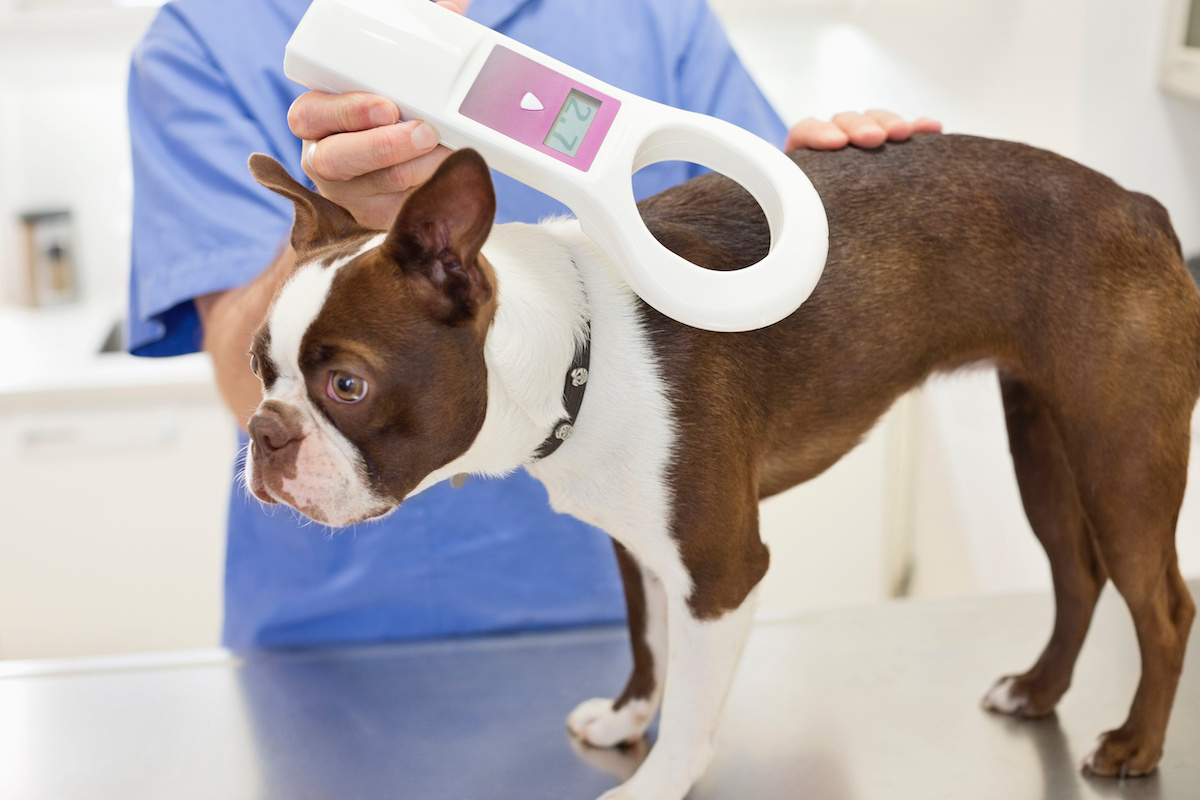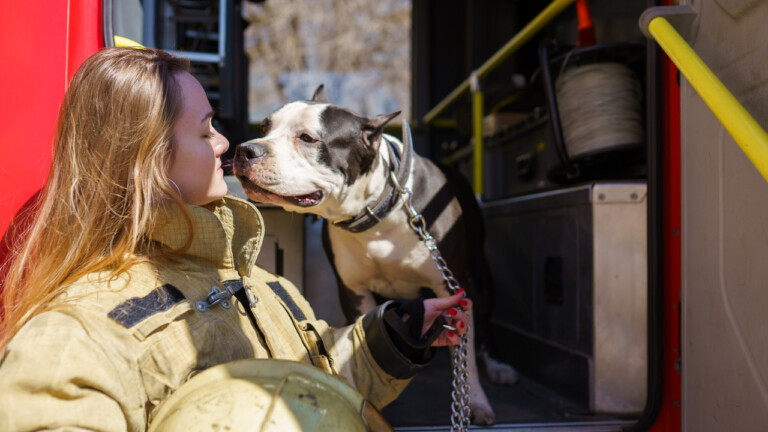Don’t Leave It Up To Luck
When pets get separated from their families, microchips are a one-way ticket home.
A microchip is a tiny device, about the size of a grain of rice, that is placed under the skin using a needle – just like a vaccine. They contain a unique 9, 10 or 15-digit identification number (think of it like your pet’s social security number). When scanned at a vet clinic or animal shelter, this number is searched in a database to find the pet owner’s contact information.
Benefits of Microchipping
A study of more than 7,700 lost animals at animal shelters in 23 states showed that microchipped pets are far more likely to be returned to their families. In that study, microchipped lost dogs were returned to their families at more than double the overall rate for all lost dogs (both microchipped and not). For lost cats, the difference in return rates was even more dramatic.
For microchipped animals that weren’t returned to their families, the most common reason was an incorrect or disconnected owner telephone number in the microchip registry database. So don’t forget to register your pet’s chip, and keep your contact information up-to-date.
August 15 is Check the Chip Day each year, when all owners are encouraged to confirm and update the contact information registered with their pets’ microchips. The American Animal Hospital Association’s (AAHA) Universal Pet Microchip Lookup Tool allows users to enter a microchip code, then directs them to participating registries associated with that code.
Microchipped animals should be scanned during their regular preventive care exams to confirm that their chip is still functioning properly.
Microchip Frequently Asked Questions
Is microchipping safe?
Absolutely! It is a quick, safe, and simple procedure that only takes a few seconds and does not require any anesthesia.
Can my pet feel a microchip?
Generally, pets do not feel a microchip in their skin. The chip is very small and is inserted just beneath the skin, typically between the shoulders. It is similar to getting a vaccine, so a pet may feel a slight pinch or pressure.
How do I know if my pet’s microchip is registered?
Check if your pet’s chip is registered by using AAHA’s pet microchip lookup tool. This useful tool tells you if/where a chip is registered. This registry tool is only for pet owners to determine if/where a chip is registered; pet owners need to update information through the provider a pet’s chip is registered with.
Do microchips replace ID tags?
Absolutely not. Microchips are great for permanent, tamper-proof identification, but nothing replaces a collar with up-to-date ID tags. If a pet is wearing a collar with tags when it’s lost, it’s often a very quick process to read the tag and contact the owner. Microchips must be scanned at a vet clinic, animal shelter, or other animal rescue resource like animal control. But if a pet is not wearing a collar and tags, or if the collar is lost or removed, then a microchip might be the only way the pet’s owner can be found.
Can microchip companies see my pet’s location?
Nope! Microchips are NOT GPS devices, meaning you cannot locate or track your pet with them. In fact, the chip doesn’t do anything unless it is scanned. When microchips are scanned, the 9, 10 or 15-digit identification number is the only thing that is read by the scanner.
Can my personal information be found when my pet’s microchip is scanned?
No, the microchip ID number is the only thing that is found when it is scanned. That ID number will be searched to identify what microchip company your pet’s chip is registered with. From there, the animal shelter or vet clinic that scans your lost pet can contact the registry to notify them that the pet has been found. The microchip registry will then either provide your contact information to the veterinarian or shelter, or they will reach out directly to let you know that your pet has been found.
Do microchips expire?
No. Once inserted, microchips never expire. Every chip comes in packaging with an expiration date, but that only tells the shelter or clinic how long the package will remain sterile. If the chip is planted before that date, it will stay safe and sterile. In some cases, the chip may migrate to a different location under your pet’s skin as they get older. This is why clinics and shelters scan the entire animal when looking for a chip. In extremely rare cases, the chip may come out or stop working at some point after placement. For this reason, at every vet visit, your pet should be scanned for a chip to ensure that it is still present and working!

Get Your Pet Chipped Today!
If your pet ever gets separated from you, microchips are your best bet at being reunited. You can purchase a microchip for your pet at any Emancipet location for just $20! Click here to find the clinic closest to you. No appointment needed!
YOU Can Help Keep Pets & Families Together
If every pet had access to this simple, low-cost procedure, their family could be reunited if bad luck does strike. But vet care is still out of reach for far too many families.
Just $10 gives a pet family access to a microchip and a gift of $30 covers their vet visit too! With your help, if bad luck ever does happen, we can help pets find their home again.





